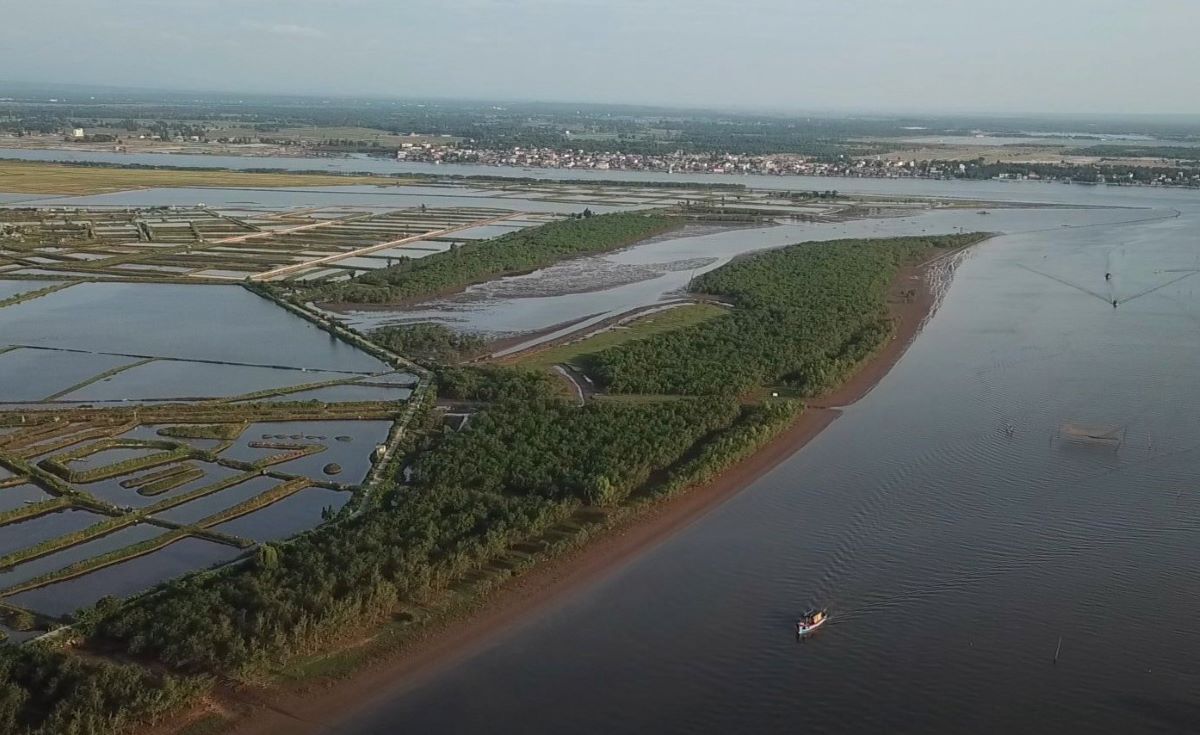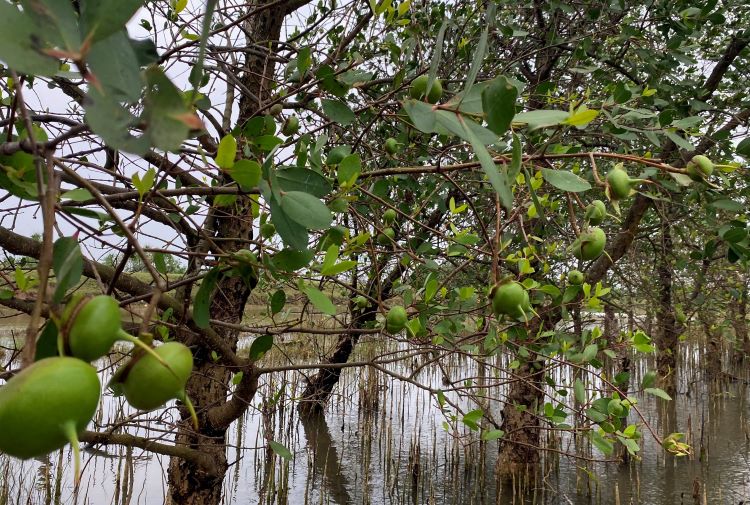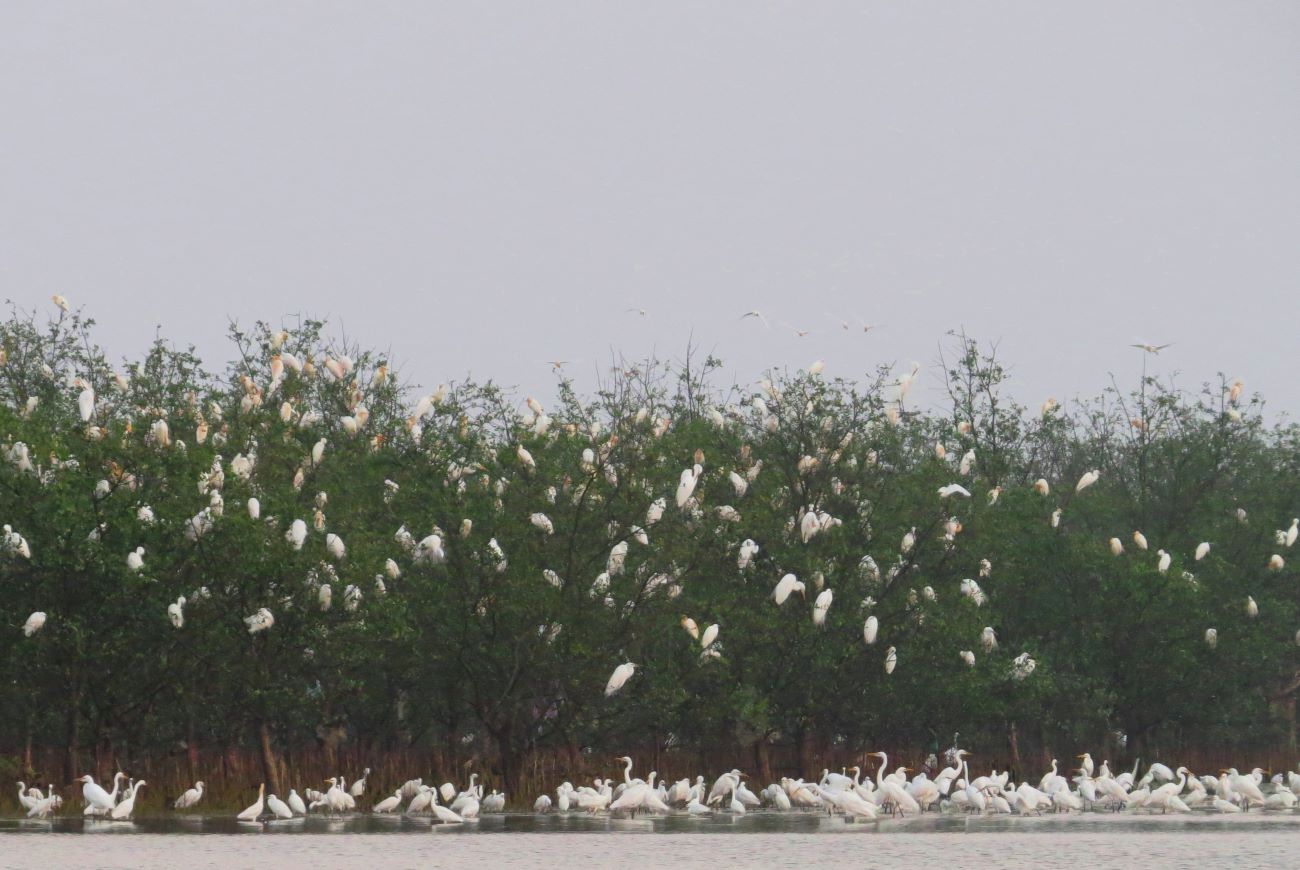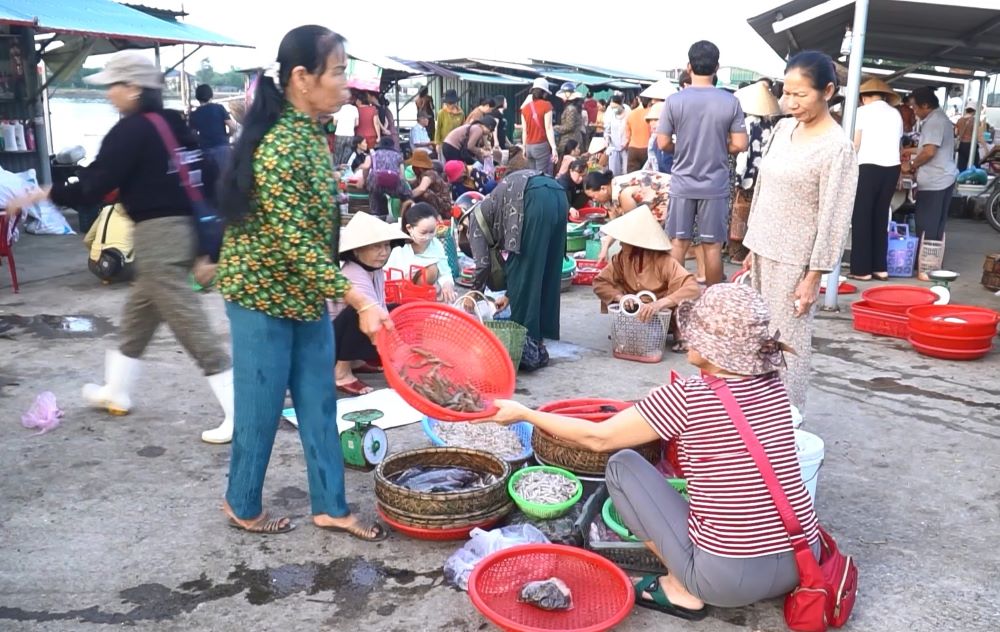Mangrove forest "revives" the island
Bac Phuoc Islet in Trieu Phong District (Quang Tri Province) is located at the end of the Thach Han River before flowing into Cua Viet Sea. Although the islet is small, with a total area of only about 4km2, it is large enough for residents of 4 villages surrounded by brackish water to live together for generations.
About 3 decades ago, Bac Phuoc island was mostly a salt marsh. In the dry season, people had to face saltwater intrusion, lack of water for daily life and production. In the rainy season, floodwaters from upstream combined with high waves and tides caused the island to be submerged in water. After each flood, people witnessed the destruction of sea dykes and the disappearance of roads...

By 2006, when the sea dike in Bac Phuoc village was solidly built, with a length of 7.8 km, the island began to stabilize and develop. The development was due to the dike's effectiveness in blocking waves, preventing salinity and preserving fresh water, and preventing high tides and soil erosion. To protect the island from increasingly harsh sea waves and weather, starting in 2010, the locality planted mangrove trees around Bac Phuoc island.
The mangrove tree is suitable for saline alluvial soil, so its roots go deep, its shoots and leaves grow, and it soon becomes a green wall to block fierce waves.
The sea dyke combined with the mangrove forest has minimized the impact of sea waves, flood water, and high tides. In particular, it also enhances the ability to deposit alluvium, prevent salinity, and retain fresh water. Thanks to that, agricultural production and aquaculture in Bac Phuoc are increasingly favorable, nearly 120 hectares of agricultural land and over 150 hectares of brackish water aquaculture always bring high economic efficiency.
The Stork's Nest
15 years ago, Mr. Nguyen Huu Dung (Bac Phuoc village, Trieu Phuoc commune) participated in planting mangrove forests on Bac Phuoc island. Now, walking under the canopy of more than 200 hectares of mangrove forests, stretching over 5km along the island's sea dike when the tide recedes, Mr. Dung is proud that he has contributed a little effort to planting forests, bringing green to the land that he has been attached to for almost his entire life.

“The soil is fertile, and every year the silt is deposited, so the mangroves grow better and better. Crab and fish breed in the mangrove forests, so people benefit a lot. The mangroves are especially flexible, so when there is a storm, this tree acts as a barrier and does not break or fall,” Mr. Dung shared.
At night, the mangrove forest on the island has many flickering lights from people checking the crabs released in the afternoon. Mr. Le Van Thanh (Bac Phuoc village) and his wife checked around and collected about 2kg of wild crabs. These crabs were purchased by traders who came to the place. Mr. Thanh and his wife only caught the big crabs, the small ones were released back into the mangrove forest...

Crabs, shrimps and fish breed under the mangrove roots, and above is the nest of the storks. From around 2015-2017, when the mangrove trees covered the land, the storks began to come here to live. The root system of the mangrove trees is an ideal habitat for shrimps and small fish. When the tide recedes, the mangrove roots retain many organisms and plankton, which are an abundant food source for the storks. Seeing the storks return, the local authorities and people here protect them and do not let anyone come to hunt them.

"Birds of a feather flock together in good land", flocks of storks chose mangrove forests to make their nests, so their numbers increased rapidly, up to several thousand and they are growing more and more.











